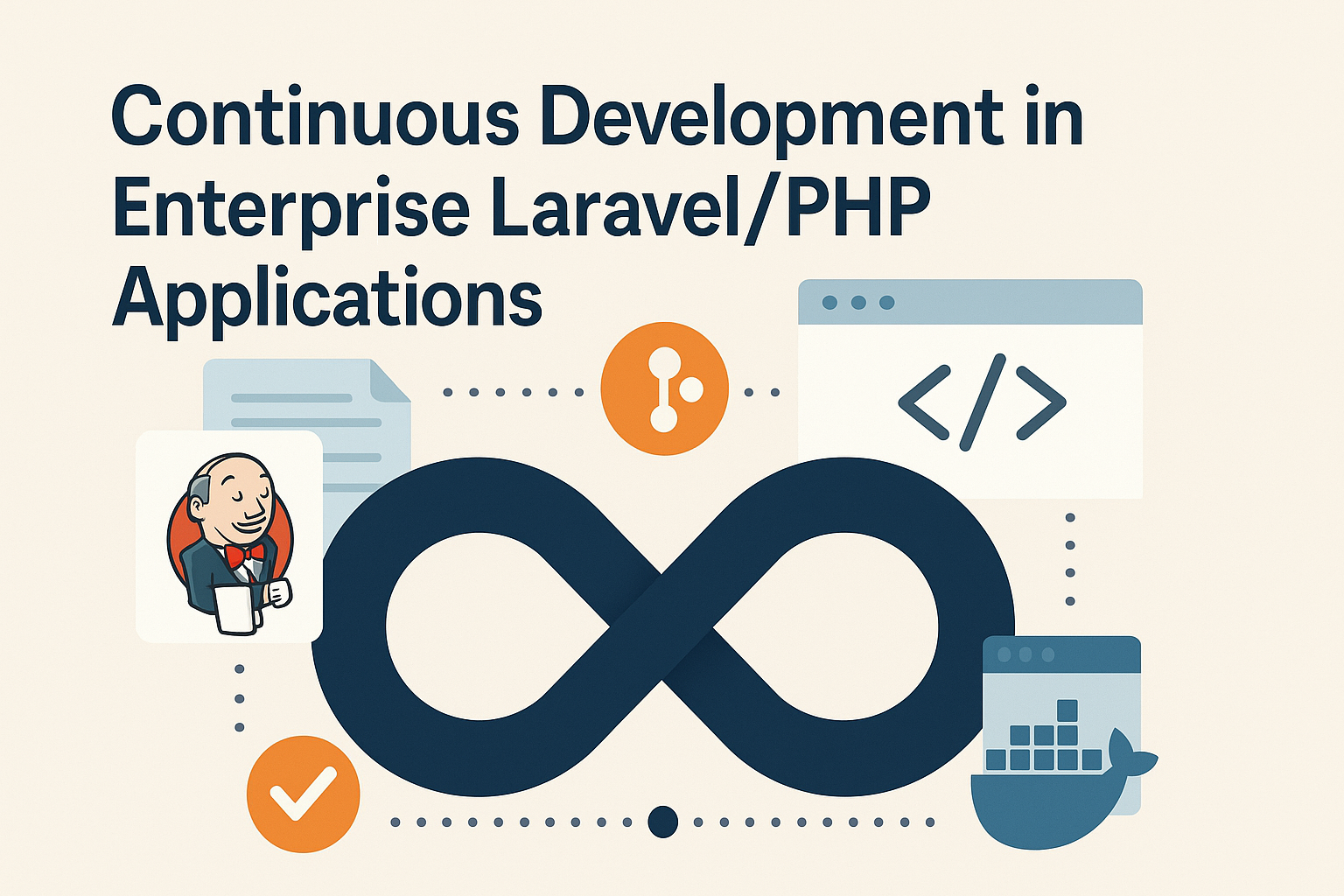Continuous Development in Enterprise Laravel/PHP Applications
In today’s fast-paced software environment, enterprise teams are under increasing pressure to deliver reliable applications quickly and efficiently. Continuous Development (CD) is a methodology that supports this goal by integrating development, testing, and deployment into a seamless, repeatable process.
This article explores how continuous development applies to enterprise-level Laravel/PHP applications, its benefits, commonly used tools, and best practices.

What Is Continuous Development?
Continuous Development refers to a set of practices that enable teams to push changes to production frequently, confidently, and with minimal manual intervention. It typically includes:
- Continuous Integration (CI): Developers merge code into a shared branch frequently, triggering automated builds and tests.
- Continuous Delivery: Code is automatically built, tested, and made ready for deployment.
- Continuous Deployment: Every validated change is automatically deployed to production without human intervention.
Why Continuous Development Matters in Enterprise Laravel/PHP Projects
Enterprise applications have high demands for uptime, security, and scalability. Continuous development helps meet these demands by ensuring that code changes are thoroughly tested, easily reversible, and quickly deployable.
Key Benefits
- Faster Delivery: New features and bug fixes reach users more quickly.
- Improved Quality: Automated testing and code validation reduce human error and bugs.
- Scalability: Infrastructure as code and containerisation (e.g., Docker) simplify scaling.
- Enhanced Collaboration: Developers work from a single source of truth with clear visibility into build status and test coverage.
Common Tools
- GitHub Actions / GitLab CI / Jenkins: For running CI/CD pipelines triggered by code pushes or pull requests.
- Laravel Envoy: A simple deployment tool using Blade-like syntax for SSH tasks.
- Docker / Docker Compose: For building isolated, repeatable development and production environments.
- PHPUnit / Pest: For automated testing of Laravel applications.
- Laravel Forge / Vapor: For automated server and deployment management.
Pipeline Example: GitHub Actions
A basic .github/workflows/ci.yml file might look like this:
name: CI
on: [push, pull_request]
jobs:
build:
runs-on: ubuntu-latest
services:
mysql:
image: mysql:8.0
env:
MYSQL_ROOT_PASSWORD: root
MYSQL_DATABASE: test
ports: ['3306:3306']
options: >-
--health-cmd="mysqladmin ping"
--health-interval=10s
--health-timeout=5s
--health-retries=3
steps:
- uses: actions/checkout@v3
- name: Setup PHP
uses: shivammathur/setup-php@v2
with:
php-version: '8.3'
extensions: mbstring, bcmath, pdo_mysql
- name: Install Dependencies
run: composer install --prefer-dist --no-progress
- name: Run Tests
run: php artisan testBest Practices
- Use Feature Branches: Keep your main branch stable and deployable at all times.
- Write Tests First: Ensure code changes are verified by unit and feature tests before merging.
- Deploy Frequently: Smaller, frequent deployments reduce the risk of introducing bugs and make issues easier to identify.
- Monitor Everything: Integrate logging and performance monitoring into your workflow using tools like Laravel Telescope, Sentry, or New Relic.
Conclusion
Continuous development brings speed, consistency, and reliability to enterprise Laravel and PHP applications. By investing in automated pipelines, testing, and repeatable deployments, engineering teams can reduce technical debt and improve product quality—without sacrificing delivery velocity.
Whether you’re managing a legacy monolith or building a modern microservice architecture, adopting continuous development principles is essential for staying competitive in today’s enterprise software landscape.
